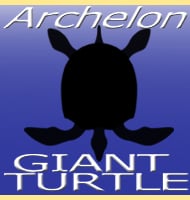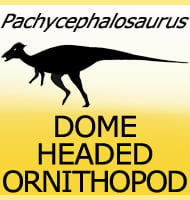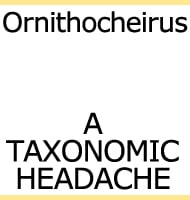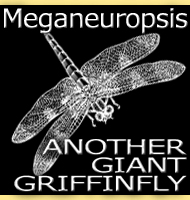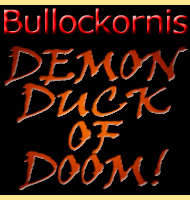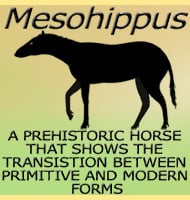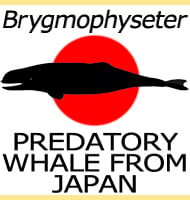As a group the carcharodontosaurids don’t seem to receive a lot of attention in popular science, which is surprising since when they are studied upon an individual genus by genus basis, the carcharodontosaurids are actually among the most popular theropod dinosaurs in the world.
For example, there is the North American Acrocanthosaurus with a ridge like hump on its back, the huge Giganotosaurus and Carcharodontosaurus, the possibly pack hunting Mapusaurus as well as the bizarre Concavenator. These predators are also all quite specialised despite initial appearances of being more ‘classic’ kinds of theropod dinosaurs.
The ‘biggest’ theropods?
Everybody has heard of Tyrannosaurus, the theropod that for a long time was thought to be the biggest meat eating dinosaur. Today a lot of people are aware that in terms of length, Spinosaurus shattered the notion of Tyrannosaurus being at least the longest theropod dinosaur.
Spinosaurus is so far known from only partial remains, which mean the exact length of weight of this dinosaur continues to be a matter of debate, and will likely stay so unless an almost complete specimen is found. The largest mostly complete Tyrannosaurus was a specimen nicknamed ‘Sue’, and was about 12.8 meters long.
Isolated and partial fossils which seem to come from individuals of Tyrannosaurus are known, and scaling complete specimens to these yields estimates of around the 13 metre mark for Tyrannosaurus. Due to the incomplete nature of such remains however, these are not ‘official’ figures, but serve as a guide for an upper potential.
The first indications that there were rivals to the mantle of largest theropod dinosaur came with the study of Acrocanthosaurus, another North American genus that is quite comfortably estimated to have been around the 11.5 meter mark for length. Although a touch on the short side, this does not take away the significance of Acrocanthosaurus being a theropod almost as large as Tyrannosaurus, yet roaming around and hunting dinosaurs on what would be the United States roughly around fifty million years before Tyrannosaurus.
The next contender was Carcharodontosaurus from North Africa. Often nicknamed the ‘African T-rex’ (a very misleading name since it is not a tyrannosaur) Carcharodontosaurus is roughly as big as Tyrannosaurus since it is estimated as ranging between 12 and 13 meters long.
Even if Carcharodontosaurus could not best Tyrannosaurus in terms of size, it is at least a respectable equal to it. Hailing from South America, the third contender came to light in the early 1990s, and today it hardly needs any introduction; Giganotosaurus.
Now Giganotosaurus is known only from incomplete remains but those that are known are usually seen to indicate a size of somewhere in between 12 and 13 meters long. Other partial remains of the genus have led to past speculation that Giganotosaurus may have been up to fifteen meters long, though a 2001 study (Blanco and Mazzetta) speculates that an upper size of 14 meters is more realistic since physically running beyond this would be problematic.
Mass studies for dinosaurs can vary greatly depending upon the source, but Giganotosaurus often comes out as being slightly heavier than Tyrannosaurus, and this is also significant because usually the size for a given animal is often established by its weight rather than length.
This is why Giganotosaurus and even Tyrannosaurus are sometimes considered to be bigger on the grounds of weight than Spinosaurus, because the spinosaurids seem to have been very gracile and lightweight for theropods.
How big carcharodontosaurids are considered to be today and in the future is more down to what perspective you are studying them from, be it length, height, weight, etc. and the lack of fossils for other kinds of large theropods such as Spinosaurus mean that a future fossil discovery could greatly upset the notions of what some people perceive to be the biggest.
What can be said for carcharodontosaurids however is that many of the genera currently assigned to the Carcharodontosauridae are easily amongst the largest predatory dinosaurs known, and by extension among the largest meat eating animals to ever walk on land.
Common features
Although some carcharodontosaurids genera are noted for their large size, not all of the carcharodontosaurids were giants. They do however seem to have had skulls that were proportionately large relative to their body size.
The skulls of the larger carcharodontosaurid genera are amongst the largest dinosaur skulls known with the skull of Acrocanthosaurus being about 1.3 meters long, the skull of Carcharodontosaurus being about 1.6 meters long, and the larger estimate of the skull of Giganotosaurus being 1.95 meters long.
These large sizes were possible because carcharodontosaurid had very large fenestra (openings), which meant that the skulls were not as solid, and therefore quite lightweight given the size. The antorbital fenestra (the opening between the eye socket and nasal opening) is often particularly large when compared to the skulls of other theropods.
When viewed in profile the anterior (front) end of the lower jaws of carcharodontosaurids also tend to appear squared off.
The carcharodontosaurids are defined by the type genus Carcharodontosaurus, and the name of this genus means ‘sharp-toothed-lizard’ (alternatively ‘jagged-toothed-lizard’). Carcharodon is also the name of a genus of sharks which also have jagged teeth and include Carcharodon carcharias, better known as the great white shark. Carcharodontosaurids have broad teeth that were laterally compressed (flattened from the sides) so that when viewed in profile the teeth seem thick, but when viewed from the front the teeth look thin.
These teeth also have large serrations that enabled them to cut through skin and muscle. These slicing teeth that operated in the same way as a serrated knife could easily cut through the flesh of any other dinosaur that lacked armoured skin.
Like most theropods the arms of carcharodontosaurids were much smaller than the legs, but they were still larger and more robust than those of later and more specialised theropods like tyrannosaurs and abelisaurs. Carcharodontosaurids also retained three fingered hands like most other theropods during the late Jurassic and early Cretaceous.
Acrocanthosaurus & Concavenator
These two genera are ‘special cases’ because they both have vertebrae where the neural spines are elongated to support growths on their backs.
The elongation of the neural spines in Acrocanthosaurus runs all the way down the back, and given the robust nature of the spines, it seems more likely that they supported a fleshy hump rather than a sail. Likewise the spines of Concavenator also seem to have supported a fleshy hump, but in Concavenator the hump seems to have been restricted to just the hip region.
Why Acrocanthosaurus and Concavenator had these growths is still unknown, but theories range from thermoregulation, to display, to fat storage for survival in lean times to even a combination of these.
These theories are discussed in more depth on the pages devoted to the genera, just click on the name links or search through the species link at the top of the page.
Although it is bizarre that these two should have had back growths whereas their relatives did not, it’s quite possible that future discoveries may reveal new carcharodontosaurid genera that also have back growths.
Geographic and temporal distribution
As a group carcharodontosaurids shared a similar distribution to another group of theropods called the spinosaurids. Both these groups seem to have been most numerous during the early Cretaceous, but they are also known from deposits laid down during the early stages of the late Cretaceous.
The description of Veterupristisaurus also indicates that the carcharodontosaurids as a group had their origins at least as far back as the late Jurassic. Again this is similar to the spinosaurids which also seem to have had their origins in the Jurassic since the naming of Ostafrikasaurus in 2012.
Partial remains from the Presidente Prudente Formation of Brazil however may indicate that at least in South America the carcharodontosaurids may have survived until the very end of the Cretaceous (Maastrichtian) period rather than going extinct during the Cenomanian/Turonian periods (Fernandes de Azevedo et al, 2013).
Again spinosaurids that were also once thought to have gone extinct during this time are now considered to have possibly survived at least until the Santonian age thanks to the discovery of spinosaurid teeth in China from a deposit dating to this time.
Most fossils of carcharodontosaurids are known from South America and Africa, but also as far as Europe and Asia. The carcharodontosaurids are also known to have gone as far as North America thanks to the discovery of fossils belonging to Acrocanthosaurus. Further discoveries of carcharodontosaurids are likely to be made in other areas of the world, especially those that link up current known fossil sites and have Cretaceous era rocks, particularly those dating to the early Cretaceous.
One continent where carcharodontosaurids are not yet known is Australia, yet even here it is not inconceivable that carcharodontosaurid fossils may one day be recovered.
Many of the fossil bearing rock formations of Australia are age appropriate for carcharodontosaurids, and other Cretaceous era theropods such as spinosaurids and neovenatorids (specifically those of the Megaraptora sub group) are known to be present here.
What dinosaurs did carcharodontosaurids eat, and how did they hunt?
The large predators often eat large prey, and while there are many documented exceptions to this rule in the natural world, the carcharodontosaurids were not. Two types of dinosaurs that are both fairly large and present with concentrations of carcharodontosaurid fossils are sauropods and ornithopods. Acrocanthosaurus had access to Sauroposeidon and Tenontosaurus, Carcharodontosaurus had access to Nigersaurus and Ouranosaurus while Giganotosaurus had access to Andesaurus and iguanodonts, and these are just some of the potential dinosaur genera that may have ended up as being food for carcharodontosaurids.
Carcharodontosaurid genera are seen as being quite physical predators, with some such as Acrocanthosaurus being noted as possessing primitive yet powerful forearms that could be used for grabbing and holding onto prey. Again with Acrocanthosaurus, the neck seems to be particularly strong and developed for providing extra support when an individual gripped onto a large animal with its mouth. Fossil track ways of a sauropod with what could be footprints from an Acrocanthosaurus alongside have also been interpreted as the Acrocanthosaurus chasing a sauropod and then actually climbing onto it. This all suggests that carcharodontosaurids like Acrocanthosaurus would latch on and not let go until their prey was down.
There are alternative theories regarding how carcharodontosaurids killed prey however, if indeed at all. The slicing teeth of carcharodontosaurids were very efficient at cutting through flesh, but some genera, particularly larger ones may have been too big or heavy to grip large prey with just the mouth since the teeth may have cut themselves loose as they struggled. Either they had to grab onto their prey such as scenarios proposed for Acrocanthosaurus, or they may have employed a different feeding strategy such as the concept of ‘flesh grazing’.
The idea of flesh grazing is commonly associated with the South American carcharodontosaurids which lived alongside some of the largest sauropod dinosaurs of all time. These dinosaurs were conceivably too big for a predator to bring down which in turn brought forth the suggestion that a predator like Giganotosaurus may have just taken a few bites from the sides of a sauropod, just enough to satisfy its hunger. The predator then leaves the sauropod which is injured but still alive, and stands a good chance to recover from the wound because of its large size. Further merit to this idea is granted when you realise that the bones of some of this sauropods would have been simply too big to fit in the mouth of even a large carcharodontosaurid like Giganotosaurus, and singly would have been too much meat for a single Giganotosaurus to eat even if it were capable of killing one.
Another idea associated with South American carcharodontosaurids is that they were potentially pack hunters. This all stems from the discovery and description of the first fossils of Mapusaurus, a smaller carcharodontosaurid than Giganotosaurus but still easily classed as a large theropod. Mapusaurus was described from the collected remains of five individuals of different ages and sizes. This find combined with the lack of remains of any other types of dinosaurs in that location ticks all of the right boxes to lead to the suggestion that these individual Mapusaurus were living in a group at the time of their death. As stated above, one large carcharodontosaurid like Giganotosaurus may have been able to bring down a moderately sized sauropod, but not a giant like Argentinosaurus. A group of carcharodontosaurids however, all attacking at once may have been able to overwhelm such a large dinosaur, while the resulting feast would have easily been able to support them for quite some time afterwards.
It should be said at this point that the idea of carcharodontosaurids like Mapusaurus working together to kill other dinosaurs is a possible but not a definite scenario. The subject of pack hunting dinosaurs remains a controversial one, and while most palaeontologists consider the possibilities there are some who dismiss the idea completely, saying that such same predator species collections are just freak occurrences. However as time goes on, such ‘freak’ occurrences are very slowly becoming more common, and group hunting in dinosaurs does not necessarily mean the execution of carefully planned strategies. A group of dinosaurs could simply be a case of several individuals mobbing an already weak individual and then going their separate ways after the kill, similar to how some birds are seen to behave today. These ideas and principals are discussed in more detail in the article Pack Hunting Dinosaurs.
Carcharodontosaurids are less well equipped for dealing with armoured dinosaurs since their teeth are more likely to break when brought down with force against bony armour. Stegosaurs would have still been present in the early Cretaceous, though they already seem to have been on the decline from their Jurassic heyday. Armoured dinosaurs that relied upon heavier armour such as polacanthids, nodosaurids and later on ankylosaurids would have been very tough targets, and breaking teeth upon attacking one would mean that a carcharodontosaurid would at least in the short term go hungry as it waited for replacement teeth to grow through.
How are carcharodontosaurids related to other dinosaurs?
Carcharodontosaurids are obviously members of the Carcharodontosauridae which is usually filed under the Allosauroidea, which also includes the Allosauridae (type genus Allosaurus), Metriacanthosauridae (type genus Metriacanthosaurus) and the Neovenatoridae (type genus Neovenator). Carcharodontosaurids like the members of all of these other family groups were medium to large theropods that had three fingered hands. These would be the closer relatives of the carcharodontosaurids, though other theropods would still be related as well, just more distantly.
The dinosaurs ancestral to the carcharodontosaurids would have likely been ancestral to these other groups, just that the Carcharodontosauridae represents a specific offshoot from that group of ancient progenitors. The carcharodontosaurids however do not seem to have spawned any specific theropod groups that carried specialised adaptations even further. For example, the two main groups of large theropods that appeared during and after the decline of the carcharodontosaurids, the tyrannosaurids and abelisaurids, are both known to have ancestors already adapted and living when the carcharodontosaurids were the apex predators of the time.
Why did the carcharodontosaurids decline during the Cretaceous?
Fossil evidence from Brazil suggests that as a group the carcharodontosaurids had living genera that were still alive around the time of the KT extinction sixty-five million years ago. This is much later than the early stages of the late Cretaceous which up until the early years of the twenty-first century was thought to be the time when they disappeared from the globe. However the lack of late Cretaceous remains does suggest that carcharodontosaurids, where still active would have been a minority group of theropods, only existing where habitats were still suitable for them to exist.
Key to this downturn in numbers would be the appearance of new types of dinosaurs, especially, herbivores that were both armoured and could potentially fight back. Specifically these were the horned dinosaurs, often called ceratopsians that were like Styracosaurus and Triceratops and more advanced ankylosaurs like Ankylosaurus and Euoplocephalus. Both of these groups became very common around areas such as North America and Asia, and as already stated, carcharodontosaurids did not have the right kind of teeth for dealing with the horns and armour of these kinds of dinosaurs. Tyrannosaurids by contrast were supremely adapted for dealing with these kinds of dinosaurs, with both teeth and bite forces capable of defeating their defences.
Tyrannosaurids could also of course hunt other dinosaurs such as hadrosaurs, and possibly even late surviving sauropods in places like Asia. The rise of new apex predators in these locales would have put pressure on surviving carcharodontosaurids, which being restricted to hunting only certain types of dinosaur, would have always been at a disadvantage to more generalist large predators. In time, especially over thousands of generations over millions of years, this combined pressure could have likely pushed carcharodontosaurids populations into very small numbers, possibly even extinction.
In the southern continents another group of new theropods, the abelisaurids, rose up to displace the carcharodontosaurids as top predators. These theropods had a very different skull form than carcharodontosaurids, but seem to have a different strategy of relying upon the strength of the skull to actually turn their heads into weapons. As far as prey is concerned, sauropods were still present, though they were now mostly in the form of titanosaurs, and some of these genera, Saltasaurus being one example, had actually developed dermal armour. Carcharodontosaurids in the south would again have faced prey that they were not as well adapted to kill, and faced competition from new theropods that were better able to hunt and kill the new prey forms. Just like in the northern continents, carcharodontosaurids would have been reduced to second rate predators, still dangerous animals in their own right, just not as broadly successful as the new predator forms.
With the latest known carcharodontosaurids coming from South America, it could be that the apparent geographic isolation of South America from the rest of the world during the late Cretaceous meant that older dinosaur forms, predator and prey, were able to survive for longer due to the relative lack of new types of dinosaurs migrating to this continent. Again however, the appearance of both abelisaurids and advanced armoured titanosaurs may have impacted numbers of carcharodontosaurids here too.
Future carcharodontosaurids discoveries
As always it is impossible to accurately predict the new discovery of fossils, but as a diverse group of theropods, it is almost a certainty that new carcharodontosaurid fossils will be found, and probably many times in the future. At this point any continent, probably even Australia, has the potential to yield further discoveries, though the hot spots seem to be South America and Africa. As for deposits, early Cretaceous and early late Cretaceous (Cenomanian and Turonian) sedimentary rocks are the most likely to yield results.
There is probably going to be a greater focus upon trying to discover carcharodontosaurids that lived later in the Cretaceous. The work by Fernandes de Azevedo et al is a start, but more complete remains desperately need to be found in order to piece together a more complete picture. South America, thanks to its isolation from the changes taking place in other parts of the world during the late Cretaceous, and history of previous discoveries, would be the logical place to focus the search for late Cretaceous carcharodontosaurids. Africa should not be completely ignored however, since this continent does not seem to have had such a diverse change in dinosaur fauna, and it may have been possible for carcharodontosaurids to hang on as a niche group of predators on this continent. The most unlikely areas to find very Late Cretaceous (all the way to the Maastrichtian) carcharodontosaurids would be Asia and North America. Here the faunal changes were the most dramatic, with many early Cretaceous dinosaur forms being almost completely replaced by new types of dinosaurs, and such radical change would have probably put more pressure on older dinosaur forms than anywhere else in the world.
A possible exception to this however may be indicated by the presence of the saurolophine hadrosaur Willinakaqe in the very late Cretaceous of Argentina. This is the first hadrosaur discovered in South America, and its presence is taken as a possible indication that at some point in the Late Cretaceous, North and South America were temporarily joined. If true, then this may have triggered a wider faunal interchange between these two continents. So by extension, if carcharodontosaurids were still around in South America at this time, they might have been able to cross into North America from this point. However assuming if even this could happen, arguments against this could still be made since carcharodontosaurids would have still been up against the same ecological pressures that drove them to decline.
List of carcharodontosaurids
- Acrocanthosaurus
- Carcharodontosaurus
- Concavenator
- Eocarcharia
- Giganotosaurus
- Kelmayisaurus
- Mapusaurus
- Sauroniops
- Shaochilong
- Tyrannotitan
- Veterupristisaurus
Further reading
- - First Brazilian carcharodontosaurid and other new theropod dinosaur fossils from the Campanian–Maastrichtian Presidente Prudente Formation, S�o Paulo State, southeastern Brazil, Rodrigo P. Fernandes de Azevedo, Felipe Medeiros Simbras, Miguel Rodrigues Furtado, Carlos Roberto A. Candeiro and L�lian Paglarelli Bergqvist - 2013.
- - Theropod teeth from the Mar�lia Formation (late Maastrichtian) at the Paleontological Site of Peir�polis in Minas Gerais State, Brazil, Carlos Roberto Candeiro, Philip Currie & L�lian Bergqvist - 2012.
- - The first definitive carcharodontosaurid (Dinosauria: Theropoda) from Asia and the delayed ascent of tyrannosaurids, S. Brusatte, R. Benson, D. Chure, X. Xu, C. Sullivan, & D. Hone - 2009.
- - A new approach to evaluate the cursorial ability of the giant theropod Giganotosaurus carolinii, Ernesto R. Blanco & Gerardo V. Mazzetta - 2001.
- - A bizarre, humped Carcharodontosauria (Theropoda) from the Lower Cretaceous of Spain, F. Ortega, F. Escaso & J. L. Sanz - 2010. - A reassessment of Kelmayisaurus petrolicus, a large theropod dinosaur from the Early Cretaceous of China, Stephen L. Brusatte, Roger B. J. Benson & Xing Xu - 2011.
- - A new carcharodontosaurid (Dinosauria, Theropoda) from the Upper Cretaceous of Argentina, R. A. Coria & P. J. Currie - 2006.
- - Theropod dinosaurs from the Late Jurassic of Tendaguru (Tanzania), Oliver W. M. Rauhut - 2011.
- - A large Cretaceous theropod from Patagonia, Argentina, and the evolution of carcharodontosaurids, Novas, de Valais, Vickers-Rich, & Rich - 2005.

